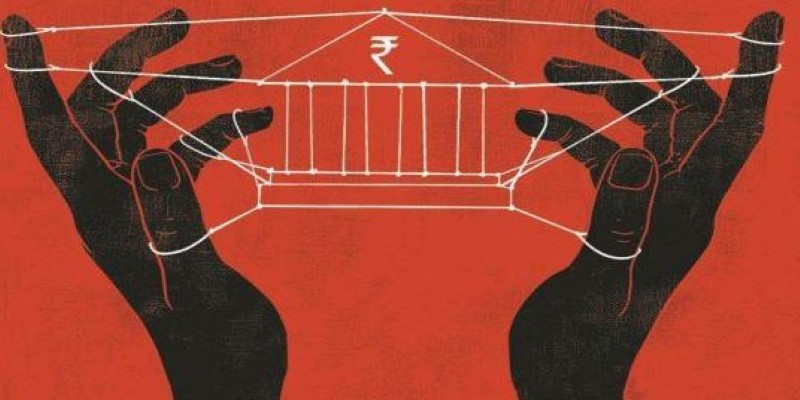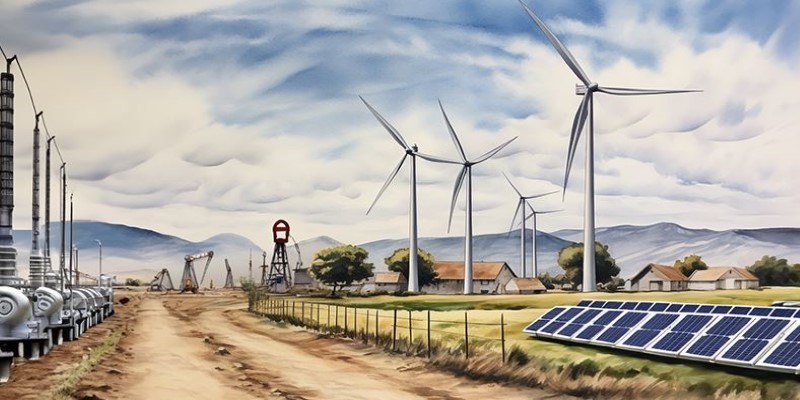Advertisement
Banking in India has come a long way from handwritten ledgers and village moneylenders to smartphones handling instant payments. What began as small, exclusive institutions serving traders and colonial interests has evolved into a vast system that touches nearly every household. This shift didn't happen overnight — it reflects decades of policy changes, technological leaps, and a growing desire among people to trust banks with their savings and ambitions. Today's banks are not just about safekeeping money, but also about enabling dreams and connecting communities. Understanding this journey reveals how deeply banking has shaped lives and how it continues to adapt to change.
Banking in India has deep and fascinating roots, stretching back to the Vedic era when simple lending practices supported farming and trade. Long before formal banks, village moneylenders, guilds, and traditional financiers known as shroffs or sahukars kept local economies running. Their businesses thrived on trust and reputation, providing much-needed credit to farmers and merchants who had no other options. These informal networks have shaped how communities handle money, and even today, traces of them remain in some rural areas.
Modern banking arrived with the British, but it wasn't designed for ordinary Indians. The Bank of Hindustan, set up in 1770, and the later Presidency Banks in Bombay, Calcutta, and Madras served colonial trade and European businesses, largely ignoring Indian customers. This exclusion created a space for Indian entrepreneurs to step in. Banks such as Punjab National Bank and Allahabad Bank appeared during the late 19th century to cater to Indian demands, spearheaded by those interested in retaining opportunity and wealth in Indian control. The Swadeshi movement at the beginning of the 20th century consolidated this initiative by motivating locally controlled banks to support Indian trade and make fewer referrals to British-run institutions.
After independence, the Indian government took steps to align the banking system with the development goals of a young nation. Initially, banks were still largely urban and served the interests of big industries and wealthy individuals. This left vast rural areas dependent on exploitative moneylenders. To address this gap, the government nationalised the Imperial Bank of India in 1955 and turned it into the State Bank of India, tasked with extending its reach into the countryside.

The most significant shift came in 1969 when the government nationalised 14 major commercial banks, followed by six more in 1980. This move was designed to ensure that banking served broader social goals—financing agriculture, small businesses, and rural development rather than just urban trade and industry. Branches began appearing in small towns and villages, giving millions their first experience of formal banking. Savings accounts, fixed deposits, and institutional loans became more accessible to the general public, marking a profound shift in how Indians interacted with money. This period also saw the birth of regional rural banks, cooperative banks, and other initiatives to bring formal credit to underserved areas.
The 1991 economic reforms marked another turning point in the evolution of banking in India. As the economy opened up, the government allowed private players and foreign banks to enter the market. This injected competition and efficiency into a system that had become sluggish under state control. Private banks like HDFC Bank, ICICI Bank, and Axis Bank brought in modern practices, better customer service, and technological innovations that quickly made them popular among younger, urban customers.
Foreign banks also increased their presence, offering niche services and bringing global practices to India. This phase saw the introduction of ATMs, debit and credit cards, internet banking, and more personalised financial products. The Reserve Bank of India (RBI) began focusing more on strengthening regulations, improving risk management, and ensuring financial stability while supporting innovation.
Another notable development during this period was financial inclusion initiatives. While private banks excelled in profitability and service quality, the government and public sector banks continued pushing into rural areas. Schemes like the Pradhan Mantri Jan Dhan Yojana, launched in 2014, further deepened financial inclusion by providing no-frills accounts to millions who had never used banks before.
In recent years, banking in India has entered the digital era. The introduction of mobile banking, Unified Payments Interface (UPI), and digital wallets has changed how people transact. UPI, in particular, has made instant, low-cost digital payments accessible to everyone with a smartphone, increasing the pace and convenience of everyday transactions. Even small roadside vendors now accept digital payments, showing the reach of this transformation.

Public and private banks have embraced online platforms, offering customers a smooth experience without needing to visit a branch. New-age players, such as payments banks and small finance banks, have emerged, catering to niche segments and utilizing technology to serve customers efficiently. Fintech firms have further blurred the lines between traditional banking and technology, offering services such as peer-to-peer lending, instant loans, and investment platforms.
The pandemic accelerated digital adoption, pushing even reluctant customers and smaller businesses to move towards cashless transactions. Today, banking in India stands at a crossroads—meeting the needs of an increasingly digital and urban population while tackling challenges in rural areas that still lack reliable connectivity and awareness of modern financial products. Cybersecurity, regulation, and keeping inclusivity in a digital world remain hurdles ahead.
Banks in India are likely to keep evolving, driven by technology and guided by policies aimed at stability and inclusion. The traditional branch-based model is giving way to a hybrid system where physical branches, mobile apps, and new products co-exist to meet diverse needs. As younger generations adopt digital services and expectations change, the banking sector will keep adapting, adding new chapters to its long story.
The story of banking in India reflects change and growth, moving from informal lenders to advanced digital platforms. Nationalisation widened access, liberalisation brought efficiency, and technology made banking faster and easier. This journey has focused on trust and connecting rural with urban, rich with poor, and tradition with modernity. As digital tools evolve, banks will keep adapting to serve people’s needs, staying connected to the aspirations of millions while ensuring inclusion and stability in a rapidly changing economic landscape.
Advertisement

How to make changes to your 401(k) contributions with this easy-to-follow guide. Understand when, why, and how to update your plan to stay aligned with your financial goals

What a VA Certificate of Eligibility is, why it's required, and how to get one to access your VA loan benefits for homeownership

How to calculate savings account interest with clear, simple steps. Understand how your balance, rate, and compounding affect your earnings, and use a savings interest calculator for quick estimates

Discover the top 12 things to do in Honolulu, from scenic hikes to markets, coastal walks, and tropical garden visits.

Explore the windfall tax effect on crude oil prices, its influence on production, supply, and market reactions, and how energy market policy decisions impact long-term trends

Travel Acadia’s scenic routes, coastal sights, and top viewpoints on a perfect park road trip.

Experience the vibrant art scene in Miami through museums, galleries, street murals, and studios.

Discover 11 scenic and stress-free day trips from Rome, from lakes and spas to hill towns and beach escapes.

Use this helpful guide to explore Louisville, Kentucky using public transport and walking.

Discover Los Angeles through its best neighborhoods, filled with culture, food, art, and unique stories.

Understand the difference between TDS and TCS, how each works, who is responsible, and why it matters. A clear and simple explanation for individuals and businesses

Discover the best energy stocks to buy in India 2023, featuring top companies leading the charge in renewables, power, and sustainable energy growth